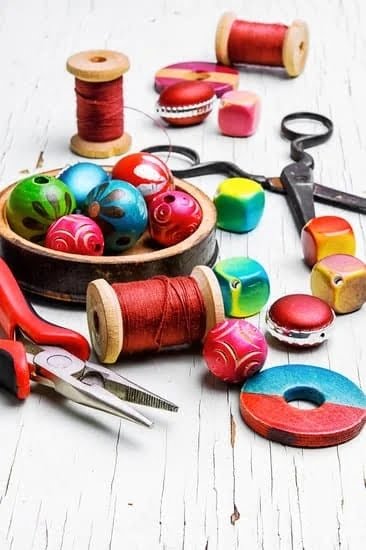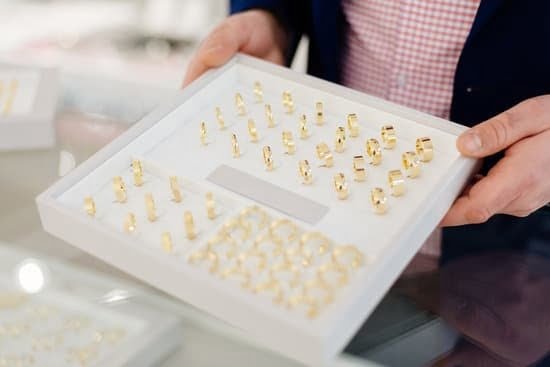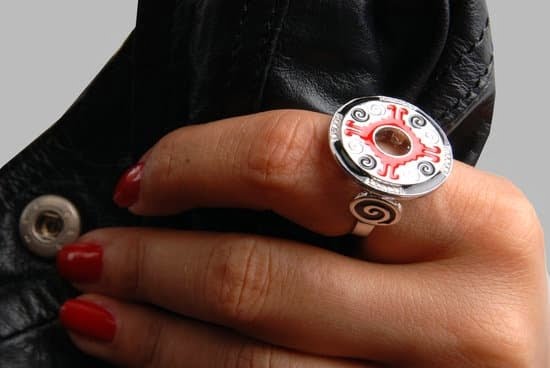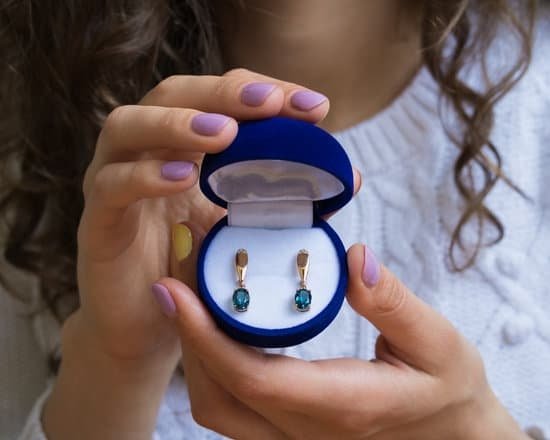Introduction
The value of costume jewelry depends on many factors, such as the materials used, the craftsmanship and design, and the age. For example, antique jewelry crafted with precious metals like gold or silver is generally considered more valuable than modern pieces crafted with less expensive materials such as plastics and acrylics. Furthermore, fine details added to jewelry can significantly increase their value, as can features like rare gems or stones or intricate patterns. Additionally, some costume jewelry is made to resemble real pieces and may be valuable if they were created with quality replications of those materials. Finally, many items of vintage-style costume jewelry are highly sought after because they offer a unique look unavailable in contemporary designs. Collectors often pay top dollar for these fashionable finds.
Overview of the Most Valuable Pieces of Costume Jewelry
When it comes to costume jewelry, some pieces can actually be worth a considerable amount of money. While it is often difficult to place an exact value on such relatively modern jewelry, there are some specific items that have an established reputation for valuable prices. This can include brands like Trifari, which sold its jewelry at high-end department stores until the mid-1980s. Some of the most sought after pieces by Trifari include the “Alfred Philippe” collections, which feature deeply colored stones and intricate designs. Other brands of costume jewelry that have been known to be worth money are Sarah Coventry and Miriam Haskell.
For Sarah Coventry, the most valuable pieces are usually vintage brooches and necklaces made in the 1950s and 1960s. These pieces feature unusual combinations of materials such as sterling silver with gold plating and combinations of different semi-precious stones such as turquoise or jadeite. Pieces from Miriam Haskell also command high prices due to their use of rare beads and other colorful gemstones. Unlike Sarah Coventry which focused on more traditional designs, Miriam Haskell used bolder colors and added more texture to her collection. As with any piece of valueable costume jewelry, condition will affect both how much it is worth as well as its overall desirability in the marketplace. Many pieces come in boxes that mark them with a serial number or code indicating the designer’s name or brand so they can easily be identified when looking at auctions or sales online. For those just starting out in collecting vintage costume jewelry, having access to trusted sellers or collectors who have a good track record will help inform decisions about what is genuine or fake trade merchandise
Historical and Cultural Origins of Costume Jewelry of Value
Costume jewelry dates back as far as the 16th century when materials such as bronze, gold, gems and pearls were used to create items of adornment. By the 19th century and even into the 20th century, costume jewelry had become a popular and affordable fashion statement for both men and women. During this time, various techniques including stamping and die-casting were used to produce costume jewelry from mass-produced alloys.
The costume jewelry industry really began to take off with the birth of “costuming” in theater and film around the turn of the century. Costume jewelers began making pieces of longer lasting materials such as bakelite, plastic, glass beads and imitation stones that could be reused multiple times.
Today, costume jewelry is still produced but with an emphasis on design rather than craftsmanship. Many contemporary designers are creating pieces that are considered collectible or museum worthy due to their intricacy or artistic details. As such, certain types of costume jewelry are now considered valuable investments due to their uniqueness or scarcity in marketplaces. Collectors often place great value on historic pieces created by noteworthy brands or well known craftspeople. Vintage or antique pieces made from sterling silver, precious stones and gold can also be quite valuable presence in auction blocks worldwide.
Photos of Antique Costume Jewelry of Value
Photos of antique costume jewelry can be invaluable to collectors and individuals who appreciate fine craftsmanship and unique pieces from the past. As jewelry trends have changed over the years, vintage items have become increasingly sought after for their artistic design and historical value. Quality antique costume jewelry often carries a hefty price tag due to its limited availability. Novice collectors should familiarize themselves with different types of materials used in making costume jewelry so they can determine whether or not an item is worth further inspection. Generally speaking, pieces made with valuable metals like gold, silver, or platinum are most likely to retain their value over time. Examples may include necklaces, pins, earrings, or even small boxes or compacts with intricate designs. Often times techniques such as enameling, engraving and hand-set stones were utilized in manufacturing process which can make those pieces more desirable than ordinary stock production items. Furthermore researching into the history of the designer or brand name can also help one make more informed decisions when considering buying antiques for investment purposes. Additionally looking through galleries in specialist magazines and online sources can help provide a better understanding about what decoration styles were employed previously as well as estimated values for certain rare pieces.
Methods for Estimating the Value of Costume Jewelry
Due to the rise of digital markets like eBay, Etsy and Poshmark, it has become much easier to estimate the value of costume jewelry. While exact values depend on numerous factors such as designer, age, condition and rarity, here are some general methods for estimating the worth of costume jewelry:
1. Research the designer – If the piece is from a well-known or vintage jewelry designer, it may tend to have more value than generic brands. A good place to start researching is antique books or online resources which feature appraisers who specialize in vintage jewelry.
2. Check for hallmark stamps – If a piece of costume jewelry contains hallmark stamps or branding markings then you can use these to determine its origin and approximate value. For example, certain French hallmarks denote an item was made before 1900 and may be of more value than a more modern item without a stamp.
3. Consider its condition – Just like with any other type of antiques or collectibles, the better preserved an item is, the higher its value can be when compared to poorer quality pieces. Look for signs such as broken pieces, tarnishing, missing stones or damage which make it less valuable in comparison with other pieces of similar style or period manufacture.
4 Examine materials used – The materials used for costume jewelry can range drastically in terms of desirability so check this carefully before valuing an item. Certain gems and metals such as diamond and gold are obviously very desirable but even cheaper materials like rhinestones and plating can also affect the worth so investigate thoroughly before valuation.
Trends in the Value of Costume Jewelry
For many years, costume jewelry has been an affordable way for people to accessorize their outfits and express their individual style. Some fashionable pieces are now worth money because of the rare materials used; designers, artisans, and stones that were popular at the time of creation; and the condition of the jewelry piece itself.
One way to determine the value of costume jewelry is to assess its popularity during the time it was made. During this period — typically between World War II and early 1970s — beads, rhinestones, chains, pendants, pearls, metals and even plastics were used to make ornate designer jewelry available to those on a budget. Designer brands such as Miriam Haskell, Coro Craft or Marcel Boucicault also frequently increased in value over time due to their unique styles that appealed to a broad audience during that era.
The materials used in costume jewelry can help give valuable insight into its worth. Precious stones such as sapphires or diamonds are often thought to increase in value over time but this isn’t always true with costume items due to pieces not having undergone any quality testing when compared to fine jewels. Plated metals such as gold or silver may also be less valuable than solid metal based items due to potential flaking off over time caused by daily wear or general aging but again aspect such as condition should be considered first. As well vintage designs often considerably upsurge in worth due to rarity which craft artisan designs have become iconic throughout history.
Overall assessing a costume jewelry piece’s value requires careful consideration of multiple factors—age, rarity, material and condition—to truly know how much a piece may fetch at auction or through private acquisition – pictures can provide valuable information towards this goal as it will let you inspect all aspects of the item from closer range before investing money into it .
Tips for Collecting and Identifying Valuable Costume Jewelry
Costume jewelry can be a great way to start a collection or to find a unique piece that stands out from the crowd. While it generally isn’t worth money, there are certain pieces of costume jewelry that are valued. Whether you’re looking to start collecting or have already acquired some pieces, here are some tips for identifying valuable costume jewelry:
1. Check For Metal Quality and Hallmarks – Look out for quality pieces made of gold, silver, platinum, palladium or copper. Keep an eye out for hallmarks with words like ‘Plat’, which denotes the jewelry was made of platinum; ‘Au’, which means it was produced with gold; and ‘925’, meaning it’s sterling silver.
2. Look For Vintage Pieces – Jewelry often gains more value over time depending on its design and rarity. Look for vintage designs featuring intricate details, as collectors prize these pieces more than modern ones. Only buy authentic vintage items sold by reputable dealers who are transparent about where they sourced their pieces from.
3. Cross-check designs with period fashion trends – As well as checking metal quality and hallmarks, look into period fashion trends before buying any antique pieces to ensure they fit with the era suggested by the seller . Costume jewelry from the Victorian era is often more valuable than those from other periods due to their intricate detailing and craftsmanship. Furthermore , check online marketplaces such as eBay and Etsy to see what similar items cost before making a purchase decision .
4. Research individual designers – Different designers use different techniques in their production process which often reflects in the price of their products . Do your research and get familiar with famous manufacturers such as Swarovski, Lanvin , Trifari etc., to make sure you know what you’re buying by recognizing telltale signs on particular models . Also research museum collections as master designers tend to give up a few copies of their designs for archiving purposes .
Conclusion
When it comes to investing in costume jewelry, it can be a great way to maximize the value of your money. While antique and designer costume jewelry may cost more upfront, they often have a higher resale value. If you purchase unique items that come from certain makers or eras, you could potentially see a good return on your investment. Also, when considering an item for purchase, think about what other collectors would find desirable. Research the item’s history and look into any stories behind it – such stories can add substantial value to the piece. Lastly, always make sure that you buy from trusted sellers who guarantee authenticity and quality of their pieces. With the right research and expert knowledge backing up your decisions, you could see a valuable return on your initial investments in costume jewelry.

Welcome to my jewelry blog! My name is Sarah and I am the owner of this blog.
I love making jewelry and sharing my creations with others.
So whether you’re someone who loves wearing jewelry yourself or simply enjoys learning about it, be sure to check out my blog for insightful posts on everything related to this exciting topic!





